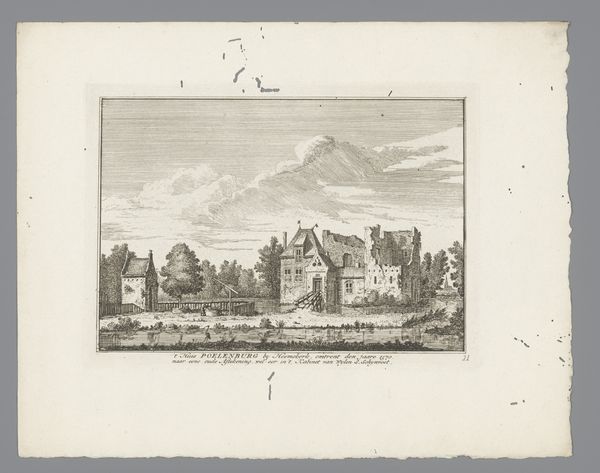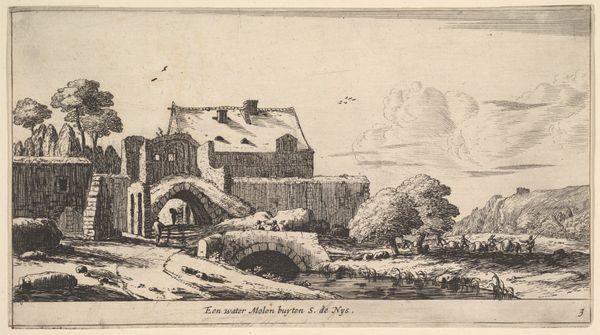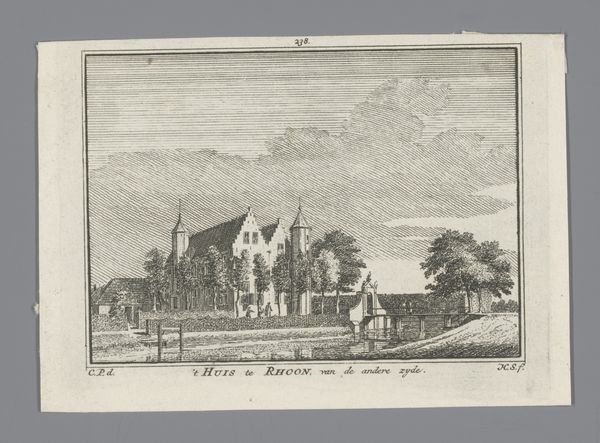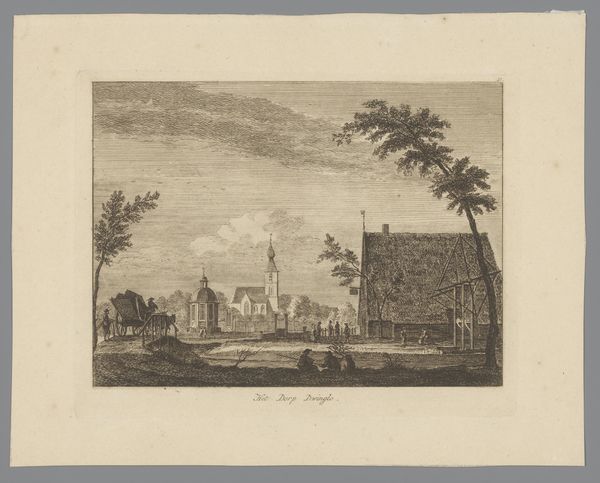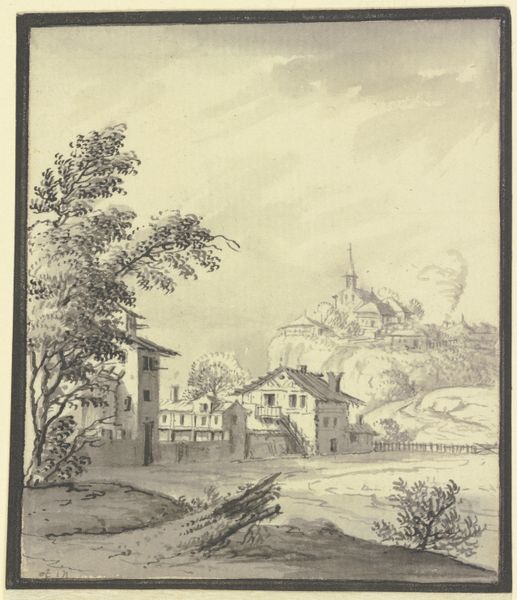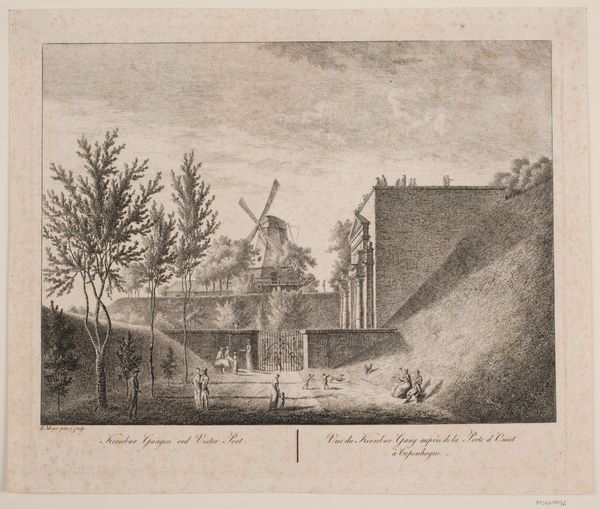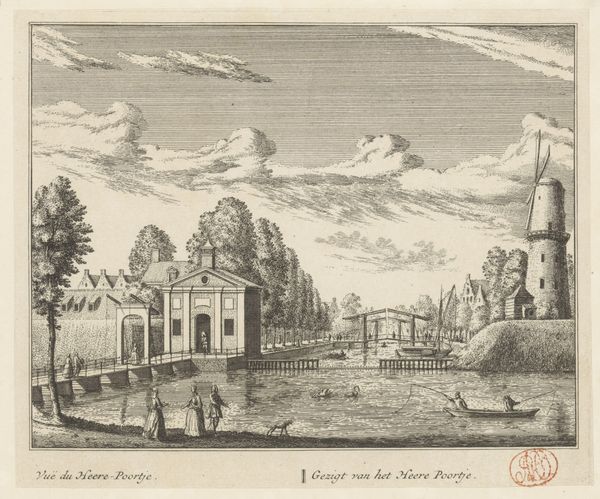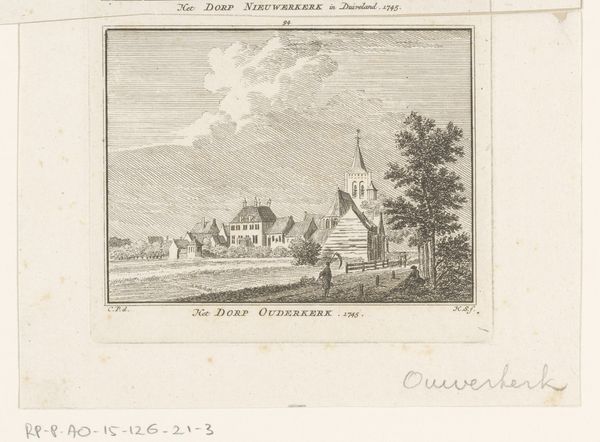
Gezicht op de sluis bij de IJsselpoort te IJsselstein, 1625 1725 - 1803
0:00
0:00
abrahamrademaker
Rijksmuseum
Dimensions: height 82 mm, width 113 mm
Copyright: Rijks Museum: Open Domain
Editor: This print, "Gezicht op de sluis bij de IJsselpoort te IJsselstein," is attributed to Abraham Rademaker and believed to be from the 18th century. The medium is engraving. The intricate details really capture a quiet moment in this cityscape. What are your initial thoughts on this piece? Curator: Thank you! My first reaction is to consider the relationship between power and representation at play here. This print, like many depictions of urban spaces, isn't merely a neutral observation. How does it serve the interests of those who commissioned, collected, and circulated it? The cityscape genre often functioned as a form of visual propaganda, celebrating the achievements and asserting the dominance of a particular place, culture, or regime. Does this image glorify Dutch ingenuity in water management or perhaps something else? Editor: I didn’t initially think of it as propaganda, but I can see that. It’s almost like visual marketing for the town itself. So, how might its historical context challenge our contemporary understanding of landscape art? Curator: Exactly! Remember that images like this one were part of a broader system of representation, where artists played a role in shaping public perception and reinforcing societal values. Consider how the artist frames the scene: Who is included and who is excluded? What does this inclusion/exclusion tell us? It’s not simply a record of what exists. Editor: That’s a great point, now I am considering the small figures near the waterway on the left side and the lone boat navigating below the structure. It reminds me to always be critical and consider the historical lens shaping these artworks. Thank you! Curator: Yes, it is exciting. Now, consider whose voices were missing, whose narratives were silenced, and whose experiences were marginalized in the making and reception of works like this. Examining power structures in visual representation challenges us.
Comments
No comments
Be the first to comment and join the conversation on the ultimate creative platform.
